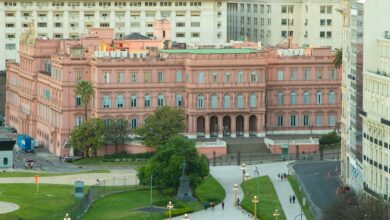Puerto Rico’s Historic Cats Face Controversial Removal Plan
A plan to remove hundreds of stray cats from a historic tourist area in Puerto Rico's capital has sparked debate between animal welfare and public health concerns.

Photo: Unsplash – Image Reference
The Latin American Post Staff
Escucha este artículo
Leer en español: Los gatos históricos de Puerto Rico enfrentan un controvertido plan de eliminación
Challenging Times for Old San Juan's Feline Residents
In Puerto Rico's capital, a historic seaside tourist area known for enchanting stray cats faces significant change. The U.S. National Park Service recently announced a plan to remove around 200 cats that have become fixtures around a fortress at the San Juan National Historic Site in Old San Juan. This decision has stirred many emotions, highlighting the delicate balance between animal welfare and environmental management.
Operated by the federal agency, the San Juan National Historic Site encompasses 75 acres surrounding the fortress. The cats considered both a delight by many and a nuisance by others, have long been part of the landscape. The plan involves contracting an animal welfare organization to undertake the removal process. If the removal is not achieved within six months, the Park Service will seek an alternative agency.
Divergent Perspectives: Cats as Charm vs. Public Health Concern
Cat enthusiasts and animal welfare advocates have expressed dismay at this decision. They argue that the cats are integral to the area's charm and have historical significance. The Park Service, however, has raised concerns about public health, noting that the cats can transmit diseases to humans. Their statement emphasized that removing the cats would benefit all visitors by eliminating a potential disease vector from the park.
Ana María Salicrup, secretary of the board of directors for Save a Gato, a nonprofit organization currently caring for these cats, criticized the six-month timetable as unrealistic. Save a Gato has been actively feeding, spaying, neutering, and facilitating adoptions for these felines. Salicrup's statement reflects the challenges faced in managing a large feral cat population and the skepticism surrounding the feasibility of the Park Service's plan.
The cats, varying in size, color, and temperament, roam the seaside trails near the 16th-century El Morro fortress, overlooking the turquoise waters of San Juan. Some of these cats are believed to be descendants of colonial-era felines. In contrast, others were introduced in the mid-20th century by then San Juan Mayor Felisa Rincón de Gautier as a means to control the rat population. Over the years, their numbers have increased significantly, drawing mixed reactions from residents and tourists alike.
The presence of these cats has become a unique aspect of the area, with visitors often seen photographing them and enjoying their company. Save a Gato's efforts to care for these animals highlight the community's attachment to them and their role in the local culture.
This situation in Puerto Rico is a microcosm of a broader issue faced in many urban areas worldwide – how to balance the presence of animals in public spaces with public health and environmental management concerns. The removal plan proposed by the U.S. National Park Service is a response to these challenges, but it raises questions about the best ways to handle such situations.
Beyond Animal Control: The Intersection of History, Tourism, and Values
The debate over the cats' removal from Old San Juan goes beyond mere animal control; it touches on historic preservation, tourism, community values, and environmental stewardship. While the concerns about public health are valid, the method and timeline for the removal have been contentious. Animal welfare groups emphasize the need for humane and realistic approaches to managing stray animal populations, advocating for solutions that consider the well-being of the animals and the community's attachment to them.
Also read: Mexico's Conservation Crusade for Axolotls
As the Park Service moves forward with its plan, it must navigate these complex issues, balancing the need for public health safeguards with respect for the community's cultural connections to these cats. The outcome of this initiative in Puerto Rico will be closely watched by those interested in urban animal management and community engagement in environmental decisions.
The plan to remove stray cats from the historic site in San Juan is not just a matter of animal control; it reflects the ongoing dialogue between historical preservation, public health, and community values. As this situation unfolds, it will provide insights into how such conflicts can be managed sensitively and effectively, respecting both the welfare of animals and the needs of the human communities they live among.




